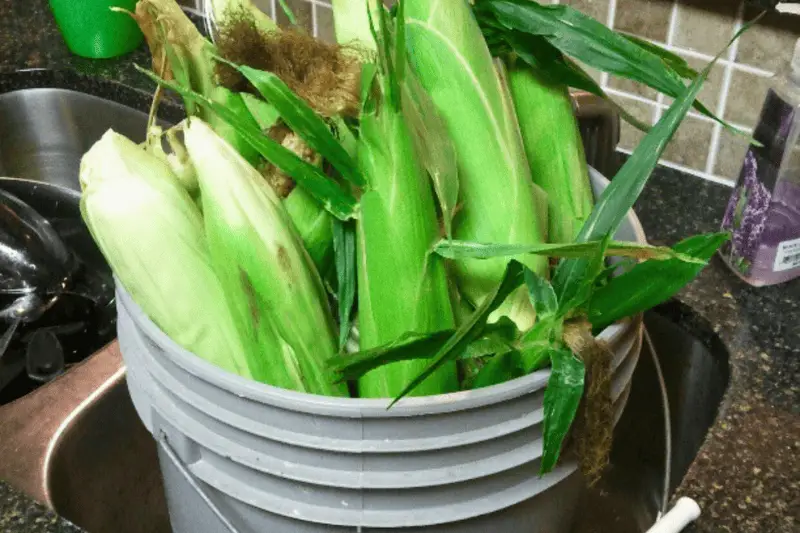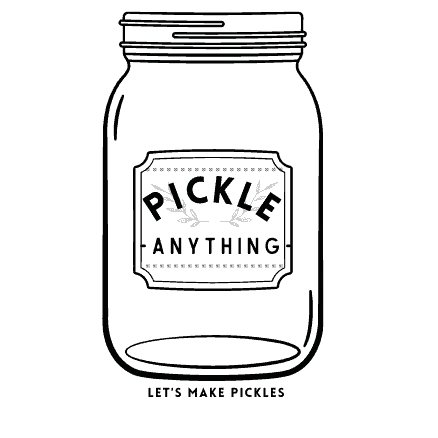Pickling is a time-honored preservation method that adds a delightful tang and crunch to various vegetables.
Among the wide range of pickled vegetables, pickled corn stands out as a unique and delicious option. If you’re looking to preserve your fresh corn harvest or simply want to experiment with new flavors, this guide will walk you through the process of pickling corn in a 5-gallon bucket.
Get ready to tantalize your taste buds and stock your pantry with mouthwatering pickled corn.

How to Pickle Corn in a 5-Gallon Bucket
Pickling has been practiced for centuries as a means to extend the shelf life of vegetables and enhance their flavor. The art of pickling has gained popularity in recent years due to the resurgence of interest in homemade, artisanal food. Pickled vegetables offer a tangy and crisp bite that pairs well with a variety of dishes.
Corn, with its natural sweetness and texture, can be transformed into a delectable pickle. By following a few simple steps and using a 5-gallon bucket, you can enjoy the flavors of pickled corn all year round.
Selecting and Preparing the Corn
To ensure the best results, it’s important to start with fresh and high-quality corn. Look for ears of corn that are firm and plump, with bright green husks.
Avoid corn with dry or discolored husks, as they may indicate the corn is past its prime.
Begin by cleaning the corn and removing the husks and silk.
Rinse the corn under cool water to remove any dirt or debris. Once cleaned, carefully cut the corn kernels from the cob. A sharp knife and a steady hand will help you achieve even and clean cuts.
Preparing the Pickling Solution
The pickling solution is a key component in the pickling process, as it infuses the corn with tanginess and preserves its texture. To prepare the pickling solution, gather the following ingredients:
- Distilled white vinegar
- Water
- Sugar
- Salt
- Pickling spices (optional)
In a large pot, combine the vinegar, water, sugar, salt, and pickling spices.
The measurements may vary depending on your personal taste preferences and the amount of corn you wish to pickle.
Bring the mixture to a boil, stirring occasionally until the sugar and salt dissolve completely. Once the solution is ready, set it aside to cool.
Filling the 5-Gallon Bucket
When pickling corn in a 5-gallon bucket, it’s essential to layer the corn and pickling solution to ensure even distribution of flavors.
Start by placing a layer of corn kernels at the bottom of the bucket. Pour enough pickling solution over the corn to cover it completely.
Repeat the process, layering corn and pickling solution until the bucket is nearly full, leaving about an inch of headspace.
This headspace allows room for expansion during the fermentation process. Gently press down on the corn to minimize air gaps between the kernels.
Sealing and Storing the Bucket
To seal the 5-gallon bucket, you have a few options.
One common method is to place a clean, food-grade plastic wrap directly on top of the corn, ensuring there are no air pockets. Another method is to use a lid that fits tightly on the bucket, securing it firmly.
After sealing the bucket, it’s time to store it in a cool, dark place.
The ideal temperature for pickling is around 70°F (21°C). Place the bucket away from direct sunlight and fluctuating temperatures, as they can affect the fermentation process.
Checking for Fermentation
Fermentation is a natural process that occurs during pickling and is a sign that the flavors are developing.
You may notice bubbles forming in the pickling solution, indicating that fermentation is taking place.
The fermentation process typically takes about 2 to 4 weeks, depending on various factors such as temperature and personal preference.
During this time, it’s important to monitor the bucket regularly. Check for any signs of mold growth or off-putting smells, as these can indicate spoilage. If you notice any issues, it’s best to discard the entire batch.
Testing the Pickled Corn
Determining the readiness of your pickled corn involves personal preference and taste testing.
After a couple of weeks, take a small sample of the pickled corn and taste it. If the flavors have developed to your liking, you can start enjoying the pickled corn.
However, if you prefer a more tangy or intense flavor, allow the corn to ferment for a longer period. Keep in mind that the longer the fermentation process, the softer the texture of the corn may become.
Using Pickled Corn
Pickled corn can be a versatile addition to various dishes and recipes.
Add it to salads for a zesty twist, or incorporate it into salsas and relishes for a burst of flavor. The pickled corn can also complement sandwiches, tacos, and grilled meats.
Let your creativity guide you as you explore different ways to use this unique and delicious ingredient.
Tips and Troubleshooting
To ensure successful pickling, here are a few additional tips to keep in mind:
- Use non-iodized salt to avoid discoloration of the pickled corn.
- Maintain cleanliness throughout the process to prevent contamination.
- If you encounter mold growth, discard the entire batch to avoid potential health risks.
- If the pickled corn develops off-flavors or unusual smells, it’s best to err on the side of caution and discard it.
- Consider experimenting with additional spices or flavors in the pickling solution, such as garlic, chili flakes, or dill.
Final Thoughts
Pickling corn in a 5-gallon bucket is a rewarding and delicious way to preserve the flavors of fresh corn.
By following the steps outlined in this guide, you can create tangy and crisp pickled corn that can be enjoyed throughout the year.
Don’t be afraid to personalize the process by adding your own creative touches or experimenting with different spices.
So why wait? Grab a 5-gallon bucket, some fresh corn, and embark on a pickling adventure that will elevate your culinary experiences.
FAQs
- Can I use frozen corn instead of fresh corn? While fresh corn is generally preferred for pickling, you can use frozen corn as a convenient alternative. However, keep in mind that the texture of frozen corn may differ slightly from fresh corn after pickling.
- How long does pickled corn last in the refrigerator? When stored properly in a sealed container in the refrigerator, pickled corn can last for several months. However, for optimal taste and texture, it’s best to consume it within 6 to 12 months.
- Can I reuse the pickling solution for subsequent batches? It’s generally not recommended to reuse the pickling solution from one batch to another. Each batch of pickled corn requires fresh and properly measured pickling solution to maintain consistent flavors and safety.
- Can I add additional spices or flavors to the pickling solution? Absolutely! Feel free to experiment with different spices, herbs, or flavorings to customize the pickling solution according to your taste preferences. Just keep track of the amounts used to maintain a proper balance of flavors.
- Can I pickle corn without using a 5-gallon bucket? Yes, you can pickle corn using other containers, such as glass jars or crocks. The 5-gallon bucket method is suitable for larger quantities and provides ample space for fermentation. Simply adjust the ingredients and measurements accordingly based on the container size you choose.
